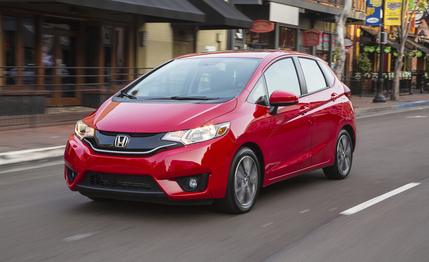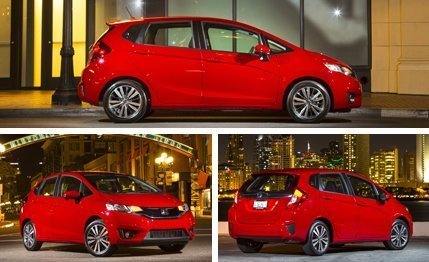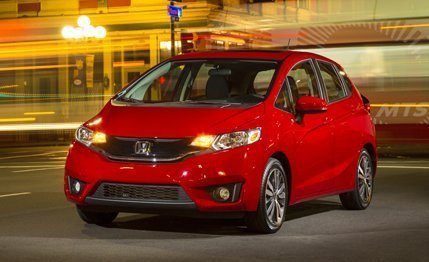
 First Drive Review
First Drive Review
Ever meet someone with a college degree in packaging? It sounds like the kind of program that’s as much BS as it is worthy of a B.S. Give us a few old shoeboxes, some packing peanuts, and a year’s worth of other car magazines, and we’ll deliver your eBay wins free of scratches and dents 60 percent of the time, every time.
But the Honda Fit has always proved that there’s a right and a wrong way to put together a package, and the Fit’s has always been right. For 2015, that right way has been revisited. The 2015 Fit gets a new platform, new engine and transmissions, and a new look. For the first time in the model’s U.S. history, it appears that aesthetics were a consideration.
It looks so much bigger but is actually 1.6 inches shorter. It keeps the same height and is 0.3 inch wider. The engorged appearance comes from a dramatically altered body-to-glass ratio. The part of the car you can’t see through is much taller, even if the car itself is not. This gives the Fit a more substantial appearance. And it is more substantial, although only slightly. Curb weights, which range from about 2600 to 2700 pounds, are up ever so slightly over the old car’s but remain at the skinny end of the class.


Honda says it’s using more high-strength steel than ever in this Fit, which means that, in spite of the small increase in curb weight, the car sees big gains in rigidity in major areas. With this, Honda expects passing grades in all NHTSA and IIHS crash tests. The latter would be a major win, as the Fit was one of 11 compact and subcompact vehicles that the insurance-company fear-mongering outfit deemed “poor” in its wicked sneak-attack small-offset frontal collision test last year.
It’s Just a Small One…
It still displaces 1.5 liters, but that’s about all the new Fit’s four-cylinder shares with the old one. Now the engine is loaded with direct injection and dual overhead cams (whereas before it had port injection and one lobestick), and in addition to i-VTEC’s dual-profile cams, the 1.5 packs variable timing control. VTC does exactly what you’d expect based on its name, retarding cam timing at low rpm and advancing it at high engine speeds. There are oil jets to cool the underside of the pistons and a crankshaft that’s been lightened a claimed 27 percent through a 50 percent reduction in counterweights, from eight to four. An additional 13 horsepower and 8 lb-ft of torque, for totals of 130 and 114, respectively, don’t sound like much for all that effort, but it is just a 1.5-liter. EPA fuel-economy estimates range from 29 mpg city and 37 highway with the manual to 33/41 with the CVT.
Like its engine, the Fit’s transmissions finally join the modern era. For manual buyers, this is a good thing, as it means a long-overdue sixth gear. For automatic buyers, it means a CVT. If you’re not sure if we think that’s a good or bad thing, you can stop now and save yourself a few grand by buying a Nissan Versa. Make sure you get the really cheap one.


…But You Can Do a Lot with a Small One
As for the Fit, its enigmatic blend of minute footprint and megalopolis indoor space is retained. Step inside—“crawl” has never been the right verb for Fit ingress—and you’ll notice a dramatic reallocation of interior volume. What’s really changed is the wheelbase, and with it, rear-seat room. Spacing the front and rear axles an extra 1.2 inches farther apart and redesigning the rear suspension with shorter trailing arms allowed Honda to move the rear seat an incredible 4.8 inches farther back from the front. That’s awfully close to the difference between long- and short-wheelbase Audi A8s and BMW 7-series, and it nets rear-seat passengers greater legroom than they enjoy in even the limolike Accord. This is no less of a miracle than the packaging breakthrough that made the first Fit such a hit.
The trade-off is in a significantly smaller cargo area, which drops from the past car’s 21 cubic feet (with the rear seats up) to 17, making what was once the segment leader only midpack. But that’s still vastly more voluminous than any affordable sedan’s trunk, and a single lever still drops the Fit’s rear seat to create a flat load floor. While again smaller than its predecessor’s (53 cubes compared with 57), the Fit’s cargo hold remains bigger than that of any competitor in our last roundup of the segment.